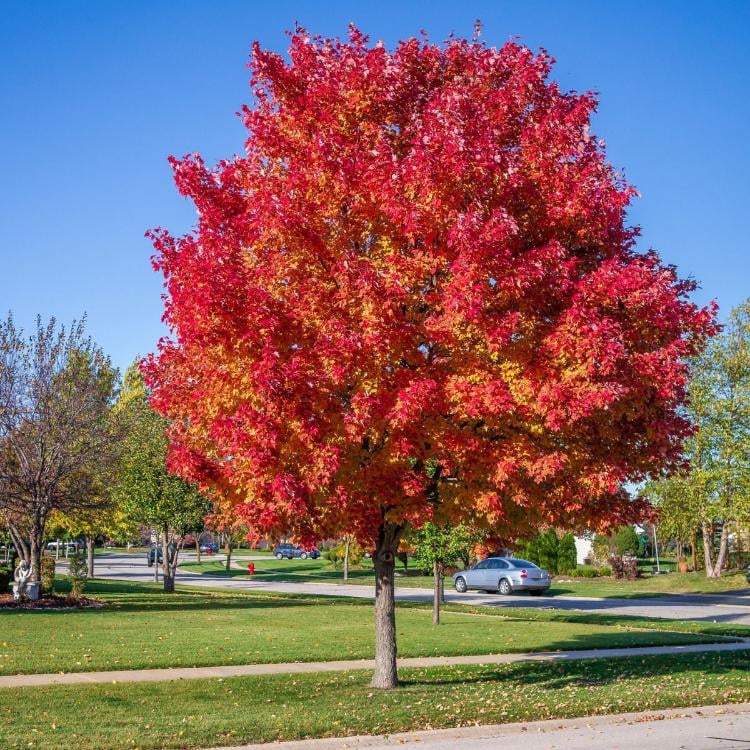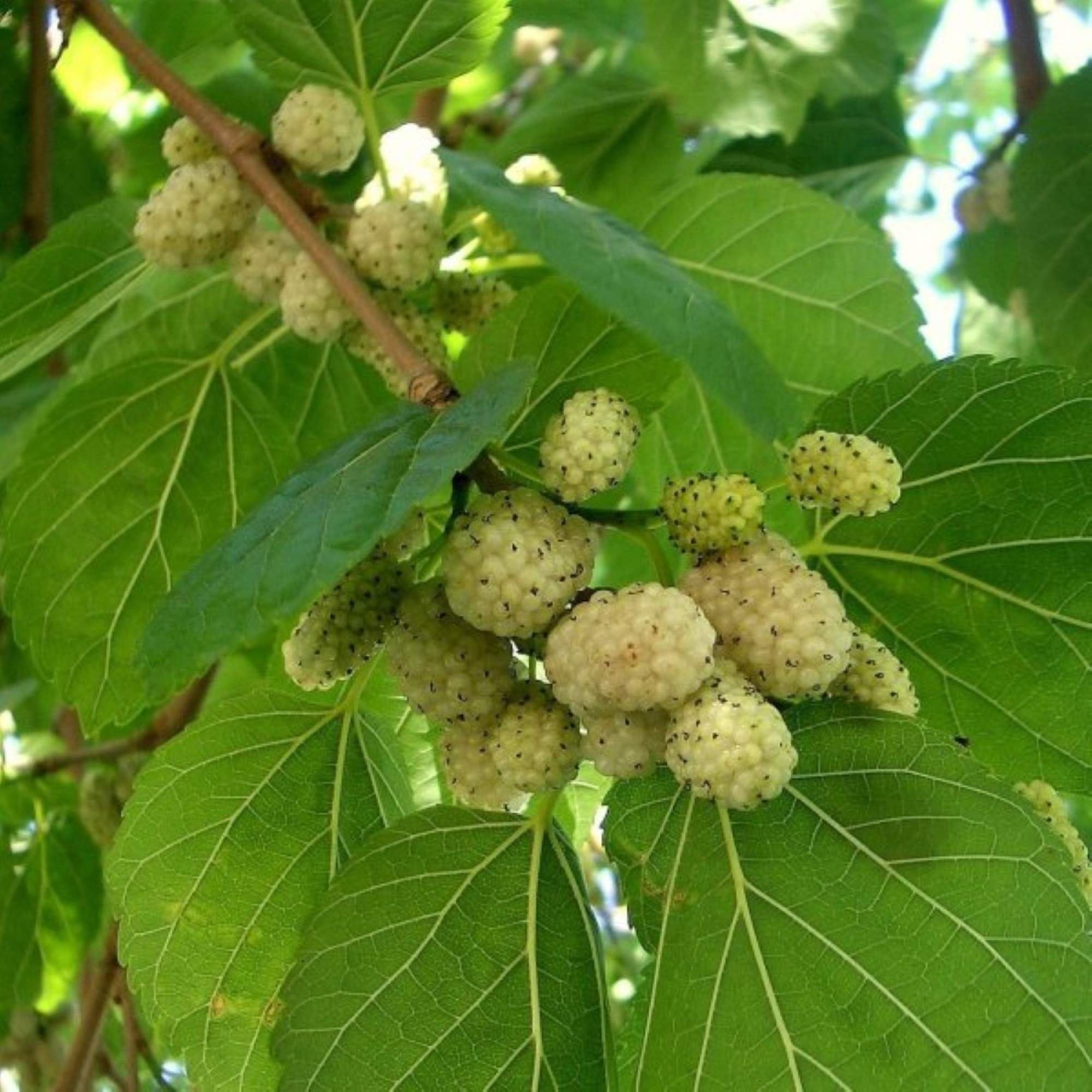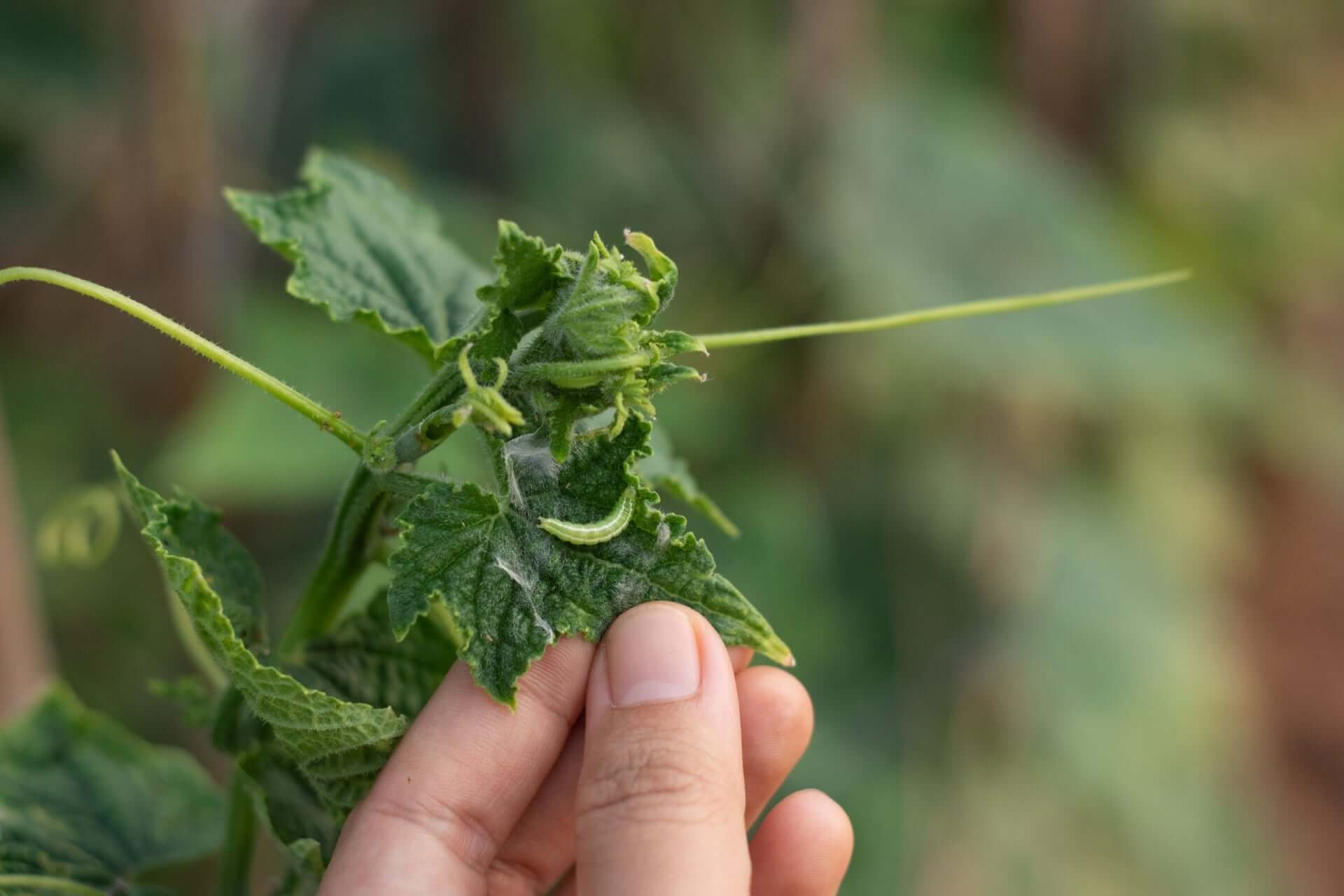Winter-Proof Your Garden: Essential Tips for Preparing Plants for Frost
Have you prepared your garden to withstand winter's frosty grip? Much like how we reach for warm scarves and heavy coats during chilly days, our garden companions require special attention to endure the cold season.
Are you ready to give your trees their best chance at surviving through the cold months ahead? Let's explore how, together.
How to Prepare Your Garden for Winter?
Protecting your plants during winter isn't just a simple task - it demands dedication and proper planning. As your trusted plant experts, TN Nursery shares essential strategies to protect your garden investment. Taking action now can spare you the heartache and expense of replacing damaged plants when spring arrives!
Let's explore some effective strategies to help your garden survive the frosty months ahead:
Mulch Your Perennials
Water Carefully
Cover the Young Plants
Avoid Heavy Pruning
The BEST shop for all your gardening needs 😎
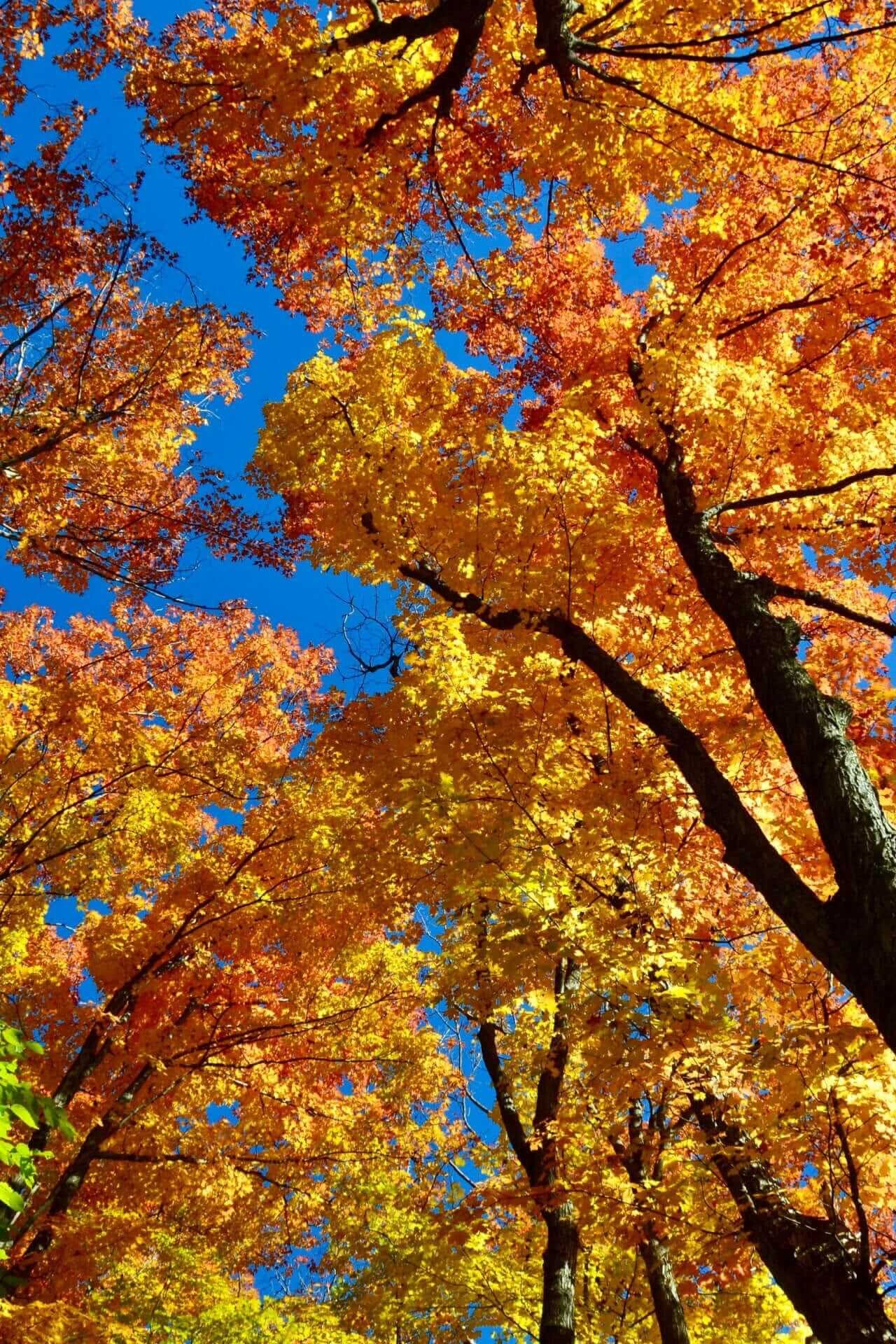
Beech Tree
Preparing your Beech tree for winter involves thoughtful care to support its growth through the colder months. Managing moisture is key in winter prep, especially since Beeches benefit from hydrated soil before it freezes. Deeply water your tree in late autumn to help the roots store needed moisture. Next, apply a layer of organic mulch, about 2-3 inches thick, around the base to regulate soil temperature and retain moisture, but keep the mulch a few inches from the trunk to avoid any mold buildup.
Young Beech trees need extra protection from frost and winter damage. Use burlap wraps to shield delicate branches and twigs from harsh weather conditions. Focus on protecting areas exposed to strong winds and potential snow accumulation.
Avoid pruning during the winter months. The dormant season is a critical time for the tree to conserve energy. Wait until late winter or early spring to trim any damaged or problematic branches. Monitor your tree periodically for signs of winter stress. Check for broken branches, potential animal damage, and ensure the root zone remains protected from extreme temperature fluctuations.
With thoughtful care, your Beech tree will emerge healthy and vibrant, ready to continue its graceful growth in the coming spring.
Black Walnut Tree
Black Walnut trees are prized for their valuable timber and delicious nuts. Preparing these majestic trees for winter is essential to maintain their health and ensure continued growth. Here's your comprehensive guide to winterizing your Black Walnut tree.
These hardy trees naturally adapt to cold temperatures, but strategic care enhances their resilience against harsh winter conditions.
In late autumn, particularly after dry spells, provide deep watering sessions. This practice strengthens root systems before dormancy, creates a moisture reserve for winter months, and reduces stress during freeze-thaw cycles
Spread a generous 3-inch blanket of organic material, such as shredded bark, wood chips, or leaf compost, around the tree's base. This natural insulation serves multiple purposes in safeguarding your tree through the cold months. Additionally, this organic covering creates an ideal environment for beneficial soil organisms that contribute to your tree's overall health.
By following these winter preparation guidelines, your Black Walnut tree will be well-positioned to thrive in the coming growing season, continuing its journey toward becoming a valuable and productive part of your landscape.
The key to winter survival for Black Walnut trees lies in proper preparation during the fall months. Proper hydration before winter is crucial for Black Walnut trees. Creating a protective winter barrier for your Black Walnut tree starts with proper mulching techniques.
Black Gum Trees
Black Gum trees, known for their stunning fall colors and ecological value, require thoughtful winter preparation to ensure their health and vigor. They are naturally adapted to varied climatic conditions. However, strategic winter care can significantly enhance their ability to withstand harsh winter elements and emerge healthy in spring.
Proper hydration is paramount before winter sets in. Late autumn is the ideal time to deeply water your Black Gum tree, ensuring roots are well-saturated before the ground freezes. Create a protective barrier around the root area with a thick layer of organic mulch. Avoid the urge to prune in early winter; instead, wait until late winter or early spring when the tree is completely dormant.
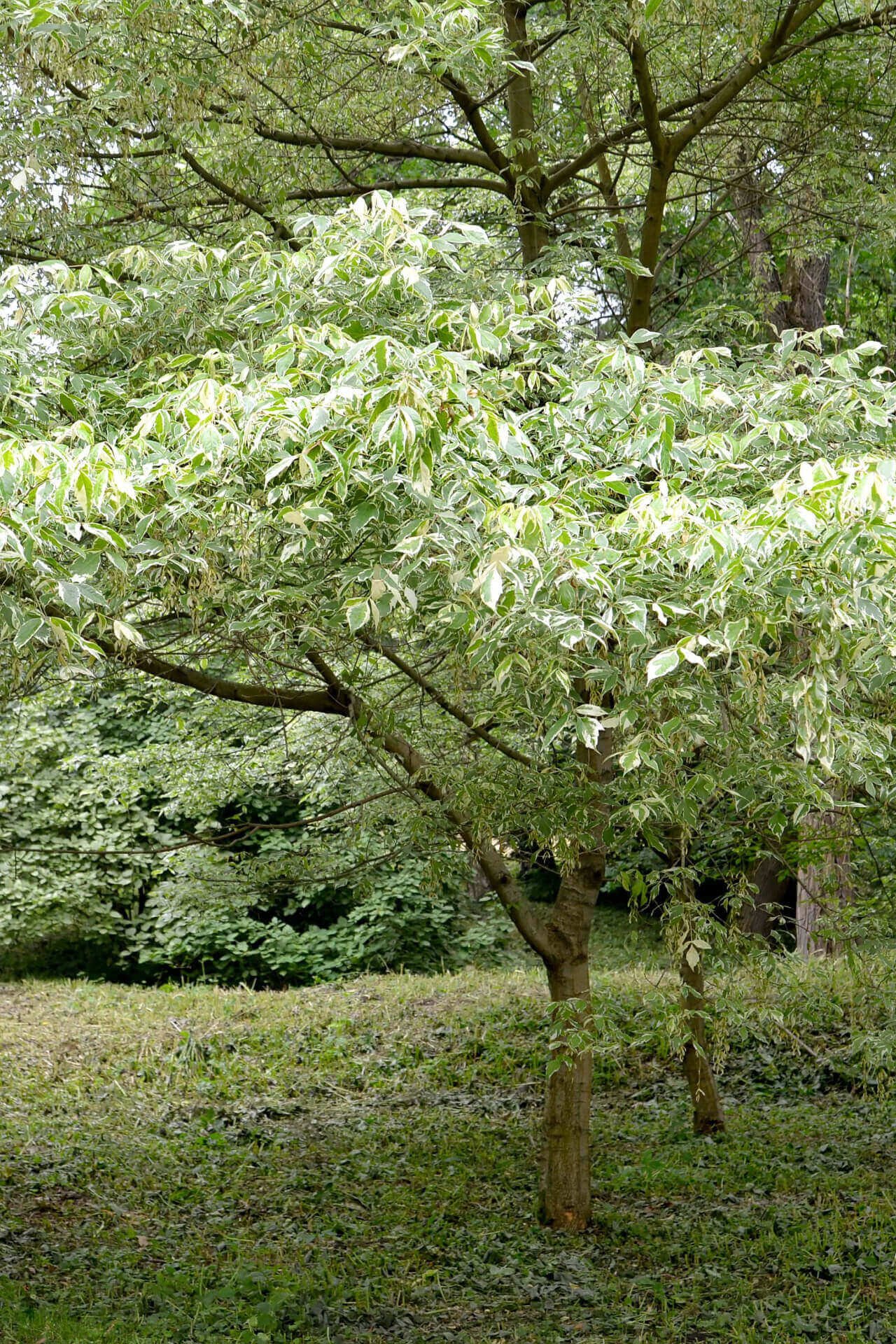
With these protective measures in place, your Box Elder tree will be well-equipped to weather the cold season. Come spring, you'll be rewarded with healthy new growth and a tree ready to provide another year of shade and beauty to your landscape.
Box Elder trees
Box Elder trees, while naturally hardy, benefit from thoughtful winter preparation to ensure their continued health and vigor. As autumn's crisp air signals the approaching cold season, begin your winter preparation by assessing your tree's moisture needs. These adaptable trees require thorough hydration before winter sets in, particularly during dry fall seasons. Using a slow-drip method, water deeply around the root zone until the soil is well-saturated, giving the tree a crucial moisture reserve for the challenging months ahead.
Protecting your Box Elder through winter requires careful attention to mulching practices. Start by gathering high-quality organic materials - either aged wood chips, natural bark pieces, or composted leaves work well for this purpose. Spread this protective covering in a consistent layer, roughly 3 inches deep, making sure to begin several inches away from where the trunk meets the soil. Continue the mulch outward until you reach just past where the outermost branches extend.
Young Box Elder trees and those in windy locations need extra attention. Consider wrapping the trunk with breathable tree wrap or burlap, starting from the base and working upward. This protection helps prevent winter sunscald and shields tender bark from harsh winds and temperature fluctuations. While it might be tempting to prune during winter, resist this urge. Instead, save any necessary pruning for early spring when the tree can better heal and recover.

Catalpa tree
Preparing your Catalpa tree for winter is essential to ensure its health and vitality through the cold months. While Catalpa trees are generally hardy and can withstand cold temperatures, proper winter preparation will help your tree thrive come spring.
Begin winter preparation in late fall by gradually reducing watering as temperatures decline. However, keep the soil moderately moist until the ground freezes, as this helps protect the tree's root system. Apply about a 3- to 4-inch layer of mulch around the base, extending it to the drip line, but leave several inches clear around the trunk to prevent rot. This mulch layer helps maintain stable soil temperatures and retains essential moisture.
Young Catalpa trees benefit from trunk protection against winter sunscald and frost cracking. Wrap the trunk with light-colored tree wrap from the base up to the first major branches, removing it in early spring. If your area experiences heavy snow, gently brush off accumulated snow from branches to prevent breakage, as Catalpa's large leaves can catch significant amounts of snow.
Avoid fertilizing your Catalpa tree late in the season, as this may stimulate new growth that could be damaged by frost. Any necessary pruning should be done during the dormant season, removing dead, diseased, or crossing branches to maintain the tree's structure and health.
Remember, investing time in proper winter preparation of your Catalpa tree not only protects your investment but also ensures years of enjoyment from its stunning summer flowers and distinctive bean-like pods. If you have any concerns about your tree's winter care, don't hesitate to reach out to our expert team for personalized guidance.

Sherry C.
04-19-24
Always Reliable
I have placed two orders with TN Wholesale Nursery. Both have been above my expectations. Mayapple and cedar trees were in my last order. They arrived healthy and on time. I trust TNWN.
Cedar tree
Preparing your Cedar tree for the winter season is crucial for maintaining its stunning evergreen beauty and ensuring its long-term health. While Cedars are naturally cold-hardy, proper winter preparation helps them withstand harsh conditions and emerge vibrant in spring.
Begin your winter preparations in late fall by thoroughly watering your Cedar until the ground freezes. Deep watering is essential as it helps prevent winter burn, a common issue where needles become brown and dry from winter dehydration. Create a consistent watering schedule, ensuring the soil remains moist but not waterlogged, as Cedar trees need adequate moisture to face winter stresses.
Establish a protective mulch barrier around your Cedar by spreading 3-4 inches of natural mulching materials from the trunk's perimeter to the outer canopy edge. Keep a small gap between the mulch and tree trunk to prevent moisture-related issues. This essential winter protection helps shield the root system from extreme temperature changes, locks in vital ground moisture, and creates a natural defense against winter's harsh effects on the soil. For young or newly planted Cedars, consider creating a protective barrier using burlap wrapping, especially if planted in exposed areas. This shield protects against harsh winds, winter sunscald, and ice damage. Secure the burlap loosely to allow air circulation while providing adequate protection.
Remember, a healthy Cedar tree is your best investment in year-round landscape beauty. Our expert team is always available to provide additional guidance specific to your tree's needs and local climate conditions.
Red Sunset Maple Tree
Winter preparation for your Red Sunset Maple begins with creating a protective ground barrier. Apply a thick natural covering approximately 3 inches deep using materials such as shredded bark or leaf litter. Extend this insulating layer around the root zone, keeping a small gap between the covering and the tree's base to prevent trunk decay.
Hydration is crucial for Red Sunset Maples, so water deeply in late fall before the ground freezes. Moist soil helps the tree stay hydrated throughout the winter months. If your region experiences dry winters, continue watering as long as the soil isn’t frozen.
For newly planted maples, wrapping the trunk with a tree guard will be useful to prevent frost cracks. These wraps also protect the tree against harsh winter winds, which can dry out the bark. Avoid heavy cutting at the end of autumn, as the new branches or leaves won’t be strong enough to survive the colder months. Early spring or late winter are the best months to do all the trimming.
Following these tips will help your Red Sunset Maple prepare for the winter season. Proper hydration, mulching, and strategic trimming will ensure that your Red Sunset Maple Tree remains healthy and ready to flourish when spring arrives.
White Russian Mulberry Tree
Protecting your White Russian Mulberry from winter's challenges requires strategic planning and thoughtful care. Start by creating a protective base using natural materials like leaf compost or wood chips around the tree's root zone. This natural blanket helps maintain consistent soil conditions and preserves vital root moisture throughout the cold season.
Proper hydration plays a crucial role in early winter preparation. Schedule regular watering sessions during the initial winter weeks to build up the tree's moisture reserves. Strike a careful balance with irrigation - the soil should feel damp but never waterlogged, as excess water can damage the root system.
In regions experiencing significant snowfall, periodically and gently remove snow accumulation from branches to prevent structural damage. Save any necessary trimming for late winter or the first signs of spring, which promotes optimal healing and encourages robust spring growth.
Following these winter care guidelines will help your White Russian Mulberry maintain its vitality through the cold months and flourish when warmer temperatures return.
White Pine Seedlings
To prevent your White Pine from withering during the coming winter, the following tips might be useful.
Start with adding a protective layer of organic mulch around the base of the trunk. A thick layer of organic mulch, about three to four inches, will provide the necessary insulation for the roots from extreme temperatures. Shredded leaves or straw would work just fine for this! However, make sure to leave some space empty between the mulch and the trunk to prevent it from rotting
Water the seedlings thoroughly before the ground freezes, as they need adequate moisture to stay hydrated through the winter. However, avoid overwatering, as soggy soil can lead to root rot.
|
|
Spring |
|
|
Green |
|
|
Over 25 Feet |
|
|
White Pine seedlings spread via wind-dispersed seeds from cones |
Consider wrapping the seedlings in burlap if they’re in an area exposed to strong winter winds. This reduces the risk of windburn and moisture loss from the needles. Additionally, place a physical barrier like a small fence around the seedlings to protect them from hungry wildlife, such as deer and rabbits, who might nibble on the tender bark in winter.
Finally, avoid pruning the seedlings in late fall, as it can stimulate new growth that's vulnerable to frost damage. Instead, wait until spring when the threat of frost has passed. Proper winter care will ensure your White Pine seedlings thrive when the warmer months return.

Forest Pansy Redbud
To prepare a Forest Pansy Redbud for winter, start with a solid layer of mulch around the tree’s base. Use 2-3 inches of mulch made from organic materials like wood chips or leaves to insulate the roots. This will protect the tree from cold temperatures and help retain moisture in the soil.
Ensure the tree is well-watered before the ground freezes, as this helps it store moisture throughout winter. If the winter is particularly dry, occasional watering during warmer spells can keep the roots from drying out. Young Forest Pansy Redbuds or those in exposed areas might benefit from being wrapped in burlap or tree guards to protect against strong winds and prevent frost damage. These trees are also susceptible to sunscald, so wrapping the trunk can prevent this as well.
Cut back dead or damaged branches during the end of cold months to encourage better growth in the following spring season. Avoid fertilizing in late autumn, as this can promote new growth that may not be strong enough to survive the winter.
With proper mulching, watering, and protection from the elements, your Forest Pansy Redbud will stay strong through winter and be ready to thrive come springtime.
More On How To Protect Trees for Winter
Frequently Asked Questions
🌳Can I make own organic mulch at home?
Yes! You can create your own mulch by composting yard waste, shredding leaves, or collecting grass clippings.
🌳What shaded areas are best to protect my potted plants during winter?
For winter protection, place potted plants in shaded spots that offer some shelter from harsh weather. Ideal locations include:
- Under a porch or covered patio
- Against a north-facing wall
- In a garden shed or greenhouse
- Under dense evergreen trees
🌳What to do if I have trimmed the twigs of White Pine Seedlings too short in winters.
If you’ve trimmed the twigs too short, it should recover in spring. Protect it from extreme cold and avoid further pruning. Proper care and watering will help it bounce back.
🌳 What basic care does the Forest Pansy Redbud need in winter?
Mulch the base, water before freezing, and wrap young trees to protect them from frost and wind damage.
















































